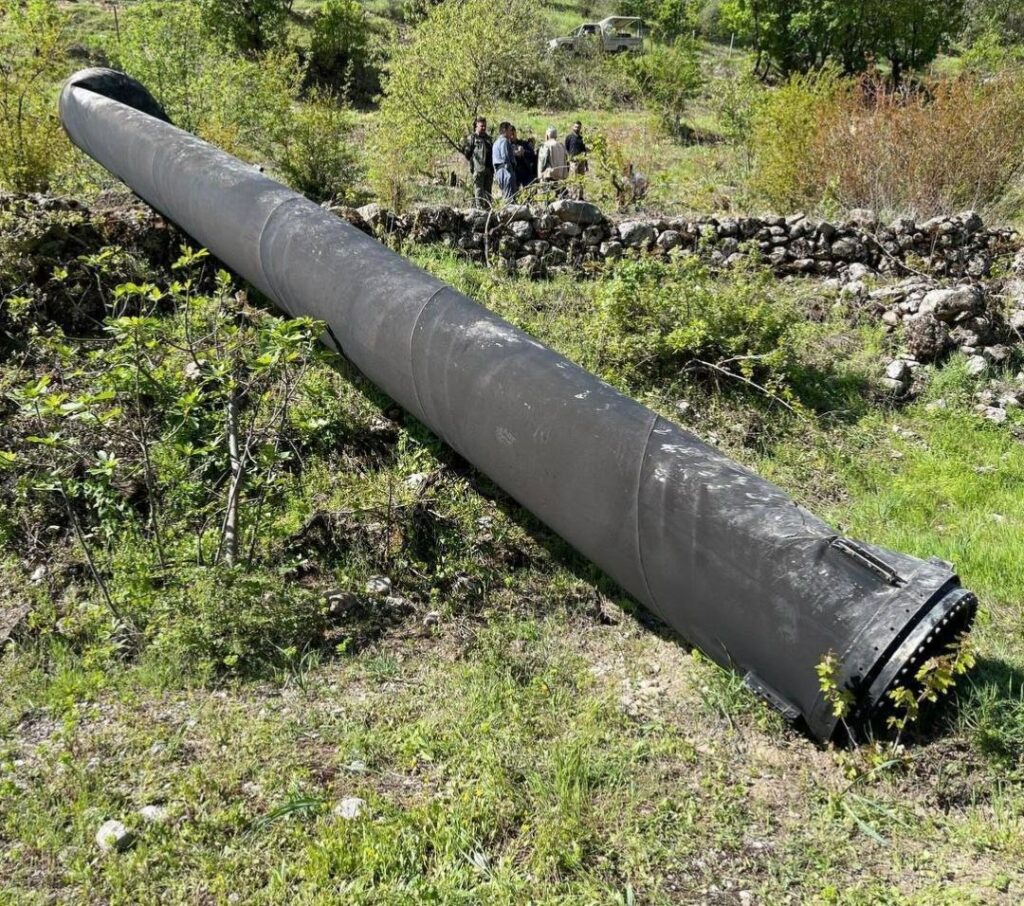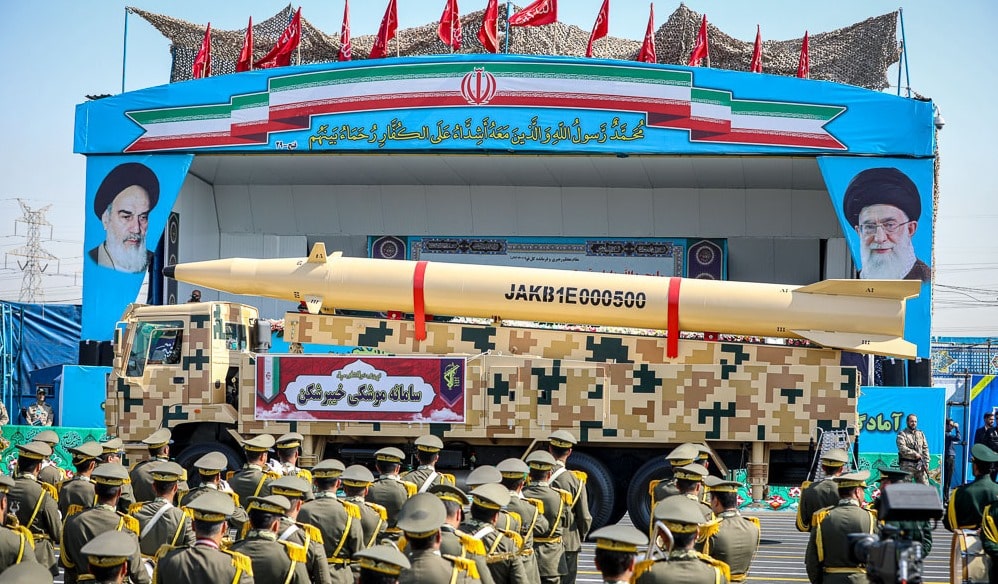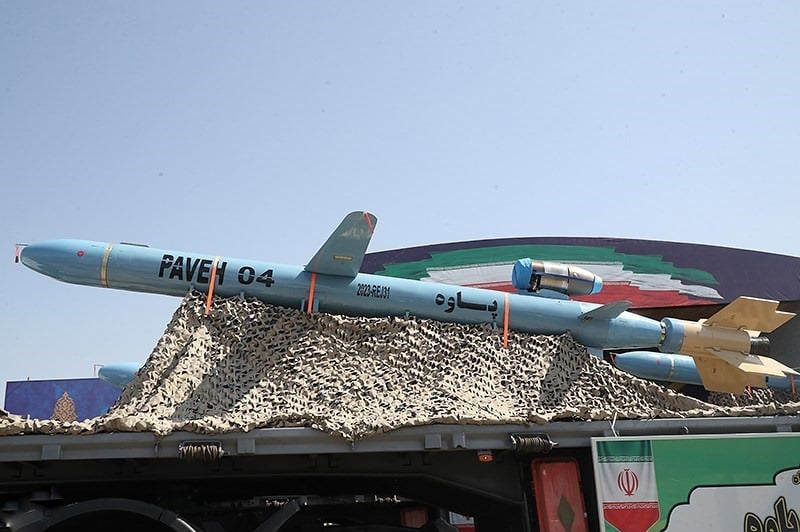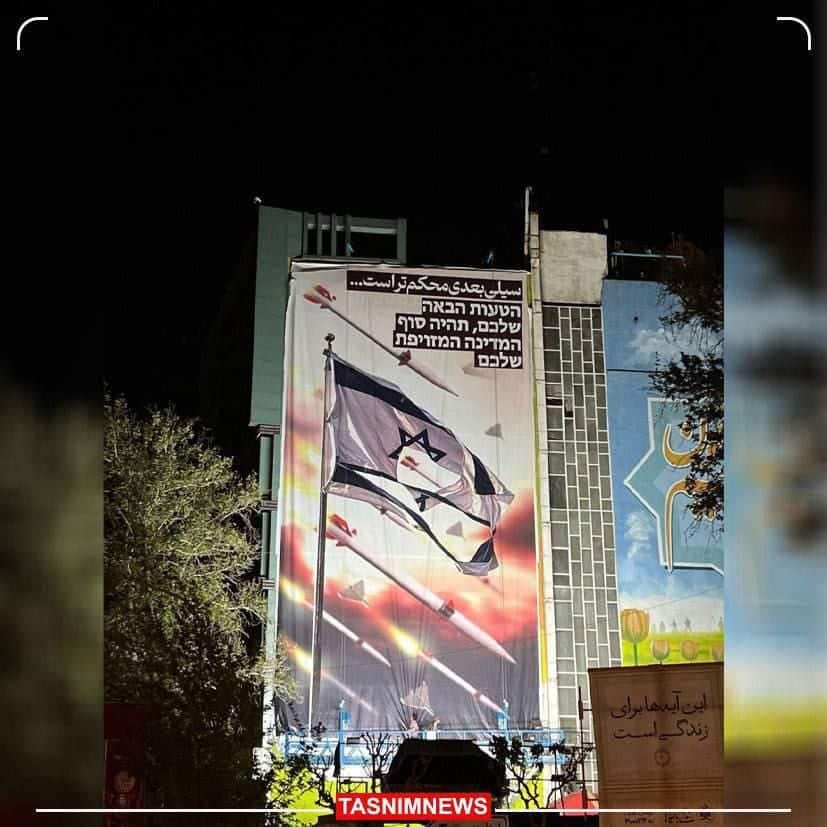Last night (13.04), Iran launched a large-scale offensive against Israel, which included launching more than 300 ballistic missiles, cruise missiles, and UAVs. According to Iran, the strike was in response to the April 1 bombing of the Iranian consulate in Damascus, which killed key Iranian officials, including Mohammad Reza Zahedi, commander of the IRGC’s Quds Force in Syria and Lebanon.
The timing of the attack, which came after days of threats and warnings, as well as real-time documentation of the attack, had a significant psychological impact. These are part of Iran’s information manipulation strategy, which pronounced the strike a success before it began. Israel’s airspace was closed at night, as were neighbors Egypt, Jordan, Lebanon, and Iraq. Videos circulated on social media showing missiles launched from Iran and swarms of UAVs flying over Iraq on their route to Israel.
This is the first time in the history of the Israel-Iran conflict that Iran has attacked Israel directly and from its territory. To date, Iran has only attacked Israel indirectly, through proxies in Yemen, Iraq, and Lebanon’s Hezbollah, to keep the conflict away from its territory. This is a strategic shift in Iranian warfare, to deter Israel from carrying out more eliminations of high Iranian officials while also establishing an equation in which targeting senior Iranian officials will result in a significant response from Iran.
According to the IDF Spokesperson’s release, Iran fired almost 300 different munitions at Israel, including around 170 UAVs, more than 30 cruise missiles, and 120 ballistic missiles. 99% of the threats were intercepted. No UAVs or cruise missiles entered Israeli territory. A few ballistic missiles infiltrated Israeli territory, while the remainder were intercepted. Several missiles struck the Nevatim air base, causing minimal damage to the infrastructure. According to Iranian sources, this is the base from which the aircraft that attacked the Damascus consulate took off. Subsequently, the IDF Spokesperson released documentation demonstrating the base’s operational readiness. Furthermore, it was reported that a 7-year-old girl suffered serious injuries in the Negev by shrapnel from interception rocket debris.
At the same time, and in coordination with the Iranian attack, several launches were carried out from Iraq and Yemen. None of them penetrated Israeli territory. In addition, Hezbollah carried out an attack at night launching dozens of Grad rockets on military bases in the Golan Heights, some of which, it claimed, were part of the IDF’s aerial system.
This morning, documentation of missile parts intercepted in Iraq, Jordan, and Syria was made public. According to Iranian reports, the IRGC deployed Khorramshahr/Kheibar Shekan and Emad surface-to-surface missiles, Shahed-136 and 238 UAVs as well as cruise missiles.

The Khorramshahr is a liquid-fueled ballistic missile based on North Korea’s HS10/BM-25 missile, which Iran purchased. The missile, which debuted in 2017, has a reported range of 2,000 kilometers and can carry a warhead weighing 1,800 kg. According to the IRGC, it has final homing systems. However, because the missile on which the Khorramshahr is based has a maximum range of 4,000 km, Western analysts have questioned the true range of the Iranian model, claiming that it is greater than declared.
During 2023, Iran introduced an advanced version of the Khorramshahr known as Khorramshahr 4 or Khiebar Shaekan. The main changes introduced in this version were solid-fuel propulsion, short deployment and launch times, a maneuverable penetrating fuselage, and an improved guidance and navigation system that allows for route corrections and high accuracy. According to Western estimates, if Iran decides to arm the missile with a smaller warhead, its maximum range will increase to 3,000 km.
The Emad, which was also used by Iran, is a single stage medium-range ballistic missile with a maximum range of 2,000 km and a 750 kg warhead. It is based on the Shehab 3 missile and has re-entry vehicle with better accuracy.

The Shahed-136 UAVs have a 2,000-kilometer range, allowing them to launch from Iranian territory and hit targets in Israel. It has a maximum speed of 185 km/h, a maximum flight height of 5 km, and can carry approximately 40 kg of explosives. The Shahed 238 is another version of this UAV. This version features a jet engine capable of flying at speeds of up to 500 km/h and a larger armament carrying capacity.
We believe that the cruise missiles, if launched from Iran, are of the Sumar type. These missiles have an estimated 2,000-kilometer range and can be launched from Iran into Israel. Iran also delivered missiles of this type to Houthi militias in Yemen (supposedly known as Quds). The Sumar type also comprises the Hoveyzeh missile, introduced in 2019, which has a reported range of 1,300 kilometers and is a more sophisticated iteration of the Sumar, as well as Iran’s Paveh missile, unveiled in 2023. According to Iranian statements, the Pawa has a maximum range of 1600 kilometers and a warhead weighing between 150 and 200 kg.


Iran utilized the swarm strategy throughout the attack. This is one of the key strategies of Iranian military tactics, and its goal is to put a strain on the enemy’s defense and detection systems. However, in this case, significant support from a number of nations, most notably the United States, the United Kingdom, and Jordan, enhanced Israel’s air defense capabilities and multi-layered defense system. This combination of forces enabled Israel to receive warnings in the early stages of the strike, intercept most of the threats, and nearly totally defeat the Iranian attack far from its borders. According to the report’s publication, 99% of threats were intercepted, and most of them did not even reach Israeli territory.
The Iranian attack is more than just a response; it is a warning and an effort to establish a new equation in the conflict with Israel. According to claims made by IRGC Commander Hossein Salami and Iranian Army Chief of Staff Mohammad Hossein Baqari, Iran has formed a new equation with Israel. Senior Iranian leaders will no longer be eliminated without a response from Iranian territory. Also, the fact that Iran did not activate Hezbollah as part of its attack is significant and instructive about the calculated nature of the activation of the Iranian regime’s proxies.
The attack, named “The Real Promise,” was heralded as a victory for Iran, and Iran’s psychological propaganda effort is working hard to propagate the notion that their attack was effective. They will always claim victory, regardless of the outcome.
The Iranians have now moved on to the next stage, threatening Israel if it dares to respond. As part of the threats, a poster was displayed in Tehran’s Palestine Square, warning of Israeli retaliation.







